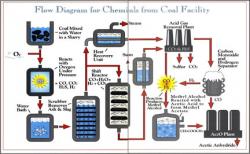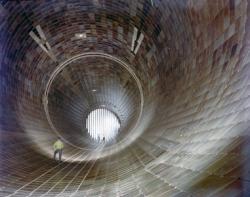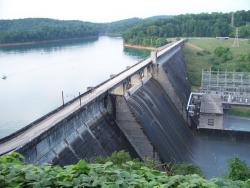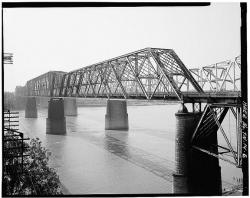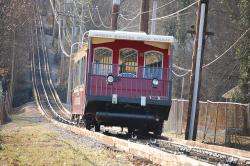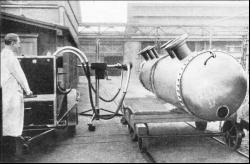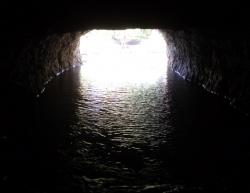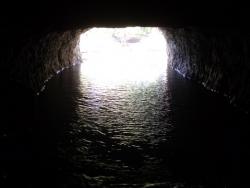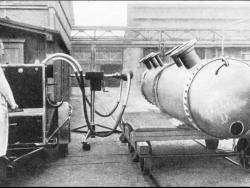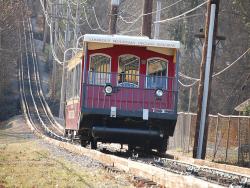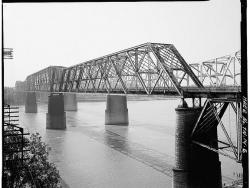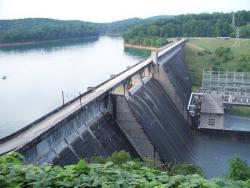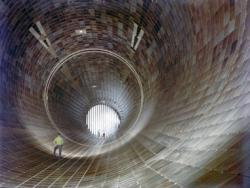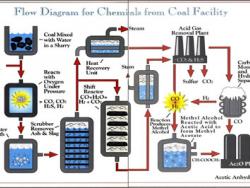Doe River Bridge is a fine example of a timber Howe truss, one of the most widely-used timber bridge designs. Built in 1884, this structure played an integral role in the development of the City of Elizabethton, Tennessee, and it is a rare example of a covered bridge that survives in an urban setting.
The original contract specified the unusual hip roof design, which resembles covered bridges in central Europe. The structure is very well-maintained and still carries automobile traffic. The bridge was restored in 2003.


